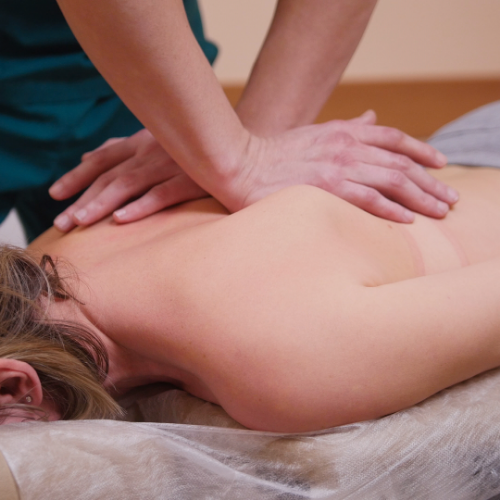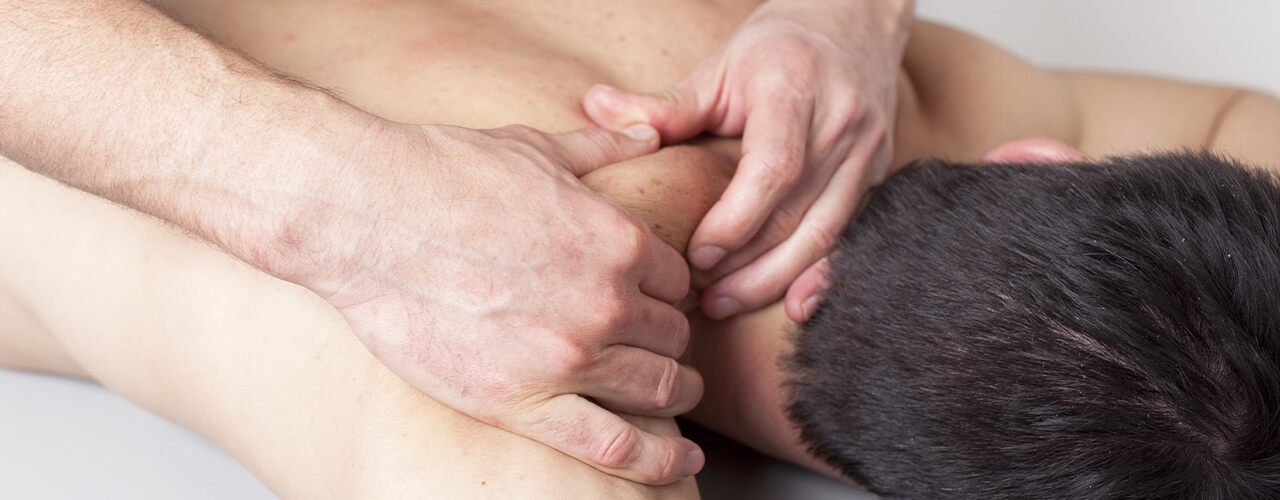
Are you living with stiff or tight muscles? If so, you have what is called myofascial pain caused by muscular irritation, and the myofascial release treatments provided at Full Potential Physical Therapy may benefit you and help you live life with less pain.
If your stiff or tight muscles are limiting your daily life, don’t hesitate to request an appointment. One of our Holland, MI occupational therapists would be happy to meet with you and discuss how myofascial release can benefit you!
How will myofascial release help me?
Myofascial release is a type of physical therapy treatment in the form of massage that helps alleviate pain by relieving tension within the affected muscles. Our occupational therapists in Holland, MI are highly trained in the method of myofascial release, with an extensive understanding of what specific pressure points to focus on, to bring your fascia back to its elastic form.
What conditions does myofascial release treat?
When muscles become constricted or tight, it can significantly impact your mobility. This can cause pain and limitations with movement. Fortunately, myofascial release works to reverse this by loosening up the constricted muscles, thus allowing for easier, pain-free movement.
Several conditions can be treated with myofascial release. Some of the most common include:
Myofascial pain syndrome.
This is the most commonly treated condition through myofascial release, and it can affect many of your muscles. The “trigger points” for your myofascial pain are determined and then massaged out.
Injury.
Injuries can also cause muscle stiffness. The affected area will be massaged to loosen up the muscles and allow for a quicker healing process.
Chronic headaches/migraines.
Myofascial release has also been known to relieve the pain of chronic headaches and migraines by massaging the tightened muscles around the head and neck.
Carpal tunnel syndrome.
Patients with carpal tunnel syndrome can benefit from myofascial release by having the muscles in their hands, wrists, and/or arms massaged, in order to improve function and mobility.
Fibromyalgia.
This condition can also cause stiffness in multiple muscles. The affected areas will be determined and then massaged.
Temporomandibular joint disorder.
The muscles around the jaw are massaged through myofascial release in many patients with temporomandibular joint disorder. This decreases pain and inflammation, as well as increases mobility of the jaw.
Venous insufficiency.
Myofascial release can help reduce the amount of blood pooled in the veins and allow for more efficient blood flow, decreasing the pain felt in the veins.
If you have been diagnosed with one of the conditions listed above, or another condition that you think could benefit from myofascial release, contact our Holland, MI physical therapy office today.
Implement myofascial release into your treatment plan today!
At Full Potential Physical Therapy, we are dedicated to providing the best quality treatment for your individual needs. Don’t let stiff, tight, or constricted muscles limit your life any longer! Request an appointment at our Holland, MI physical therapy practice today for relief.
Related Case Studies
To verify the truth about trigger points, tenderness and referral, try having someone push on the back of your shoulder blade or better yet you do that to them, especially if they have a shoulder pain problem and it is not a fresh injury. Do you will feel tight ropy bands of tissue and a nodular texture in the muscle along with tenderness? At times you can twang the tight band like a guitar string with it producing its referred pain. This is a good verification test.
A Better Life is Only Four Steps Away
Physical therapy can be an unfamiliar experience for many. To orient new patients to the process, we have divided their rehab journey into four segments called “The Four Phases of Getting Better.” It is important to note that while there are four phases utilized over the course of your care, they are not totally separate. They move gradually toward greater strengthening and function, which is the end goal to return confidently to the life you desire to live.
1
Pain Relief
The first focus in getting better is pain relief. After your evaluation, your physical therapist will use hands-on techniques or manual therapy, light therapeutic exercise, and education on how to modify your activity and posture in order to give you more control over your pain. In this stage, modalities like ice, heat, myofascial release, electric stimulation and kinesiotape may be used.
2
Improve Mobility/Flexibility
The second step in this method is to improve mobility and flexibility. Your therapist will design a progressive program of range of motion and light stretching to restore mobility and reduce pain.
3
Improve Strength/Control
In the third step of this method, muscle weakness will be addressed to help you maintain the gains and momentum you achieve through phases one and two. A thorough strengthening process is the step that gives results that last, and this will prepare you for more functional training – the final step.
4
Functional Training
Now that your pain is resolved and you have the necessary mobility and strength, your program can be advanced into functional training. Whether you are returning to work, returning to life after post-op rehabilitation, getting back into recreation or sports, or simply returning to the activities of daily life, this step helps ensure your success after graduation and empowers you to be confident in your abilities again.

Reach Your Full Potential & Live Pain-Free!
Book A Free Consultation
Book a Free Consultation Today to Find Out How Physical Therapy Can Help You Find Relief!
request an appointment
Reach Your Full Potential and Live Life Pain-Free! Request an Appointment to Get Started Today!






